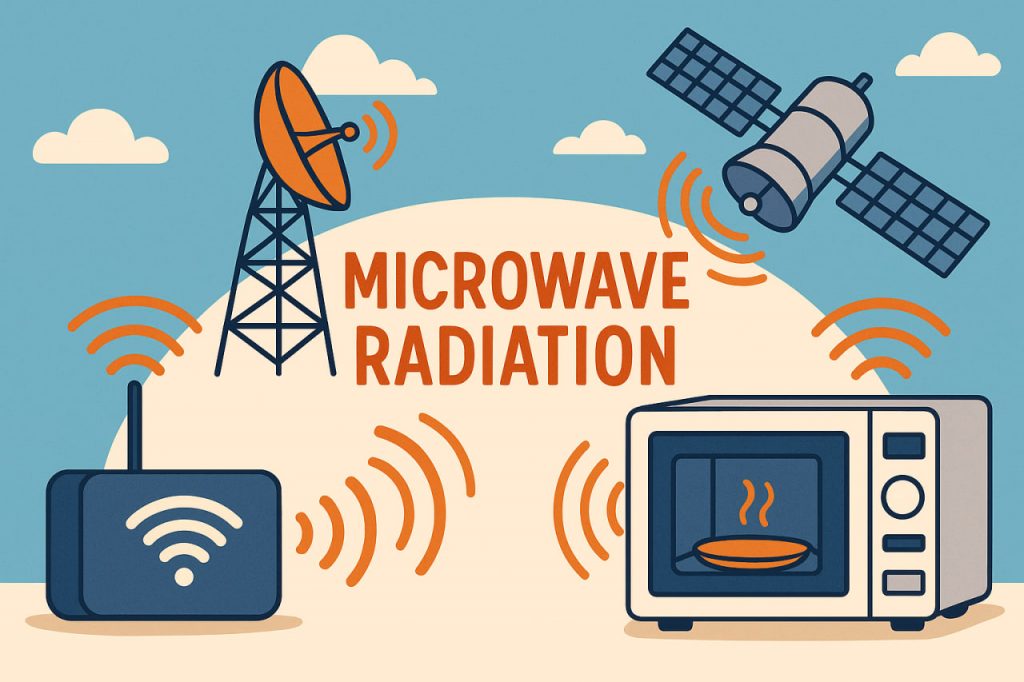Microwave radiation is a type of electromagnetic wave, located on the spectrum between radio waves and infrared radiation. With wavelengths ranging from about 1 millimeter to 30 centimeters, microwaves are used in many everyday technologies — from mobile communication to satellite transmission and, of course, microwave ovens.
Despite the word “radiation,” microwaves are non-ionizing, meaning they don’t have enough energy to damage DNA or cause ionization in atoms. They work primarily by exciting water molecules and other polar substances.
Where Do We Encounter Microwaves?
Microwave radiation is all around us and used in various technologies:
- Microwave ovens: Heat food by causing water molecules to vibrate.
- Wi-Fi and Bluetooth: Operate in the 2.4 GHz and 5 GHz bands, which are part of the microwave range.
- Radar systems: Detect objects by bouncing microwaves off surfaces (used in aviation, weather forecasting, and police speed guns).
- Satellite communication: Transmits signals through the atmosphere using specific microwave frequencies.
- Mobile phones: Use microwave frequencies for wireless voice and data transmission.
How Microwaves Interact with Matter
Microwaves interact with substances in different ways depending on their molecular structure:
- Water, fats, and sugars absorb microwaves well**. The energy from the waves causes molecules to rotate and vibrate, producing heat through friction.
- Metals reflect microwaves, which is why they can cause sparks in microwave ovens.
- Plastic, glass, and ceramics are typically transparent to microwaves, which is why they’re used for containers in microwave heating.
Are Microwaves Harmful?
In general, microwave radiation is safe only when used correctly. Microwave ovens, Wi-Fi routers, and phones emit radiation at very low, regulated levels. However:
- High-intensity exposure to microwaves, such as from industrial equipment or radar, can cause thermal injuries (burns), because microwaves heat tissue.
- Proper shielding in devices like microwave ovens is essential to prevent leakage.
Crucially, microwaves are not ionizing radiation like X-rays or gamma rays, so they don’t cause cancer by damaging DNA.
Microwave Radiation in Science and Medicine
Scientists use microwaves for:
- Microwave spectroscopy to study molecular structures.
- Medical diathermy, which uses microwaves to heat body tissues for therapeutic purposes.
- Cosmology: Observing the cosmic microwave background (CMB) — the afterglow of the Big Bang — helps scientists understand the origin of the universe.
Glossary
- Electromagnetic spectrum — the full range of all types of electromagnetic radiation.
- Non-ionizing radiation — radiation that doesn’t carry enough energy to ionize atoms or molecules.
- Microwave oven — a household appliance that uses microwave radiation to heat food.
- Cosmic Microwave Background (CMB) — faint radiation left over from the early universe.
- Spectroscopy — a method to study the structure of matter by how it interacts with electromagnetic waves.


